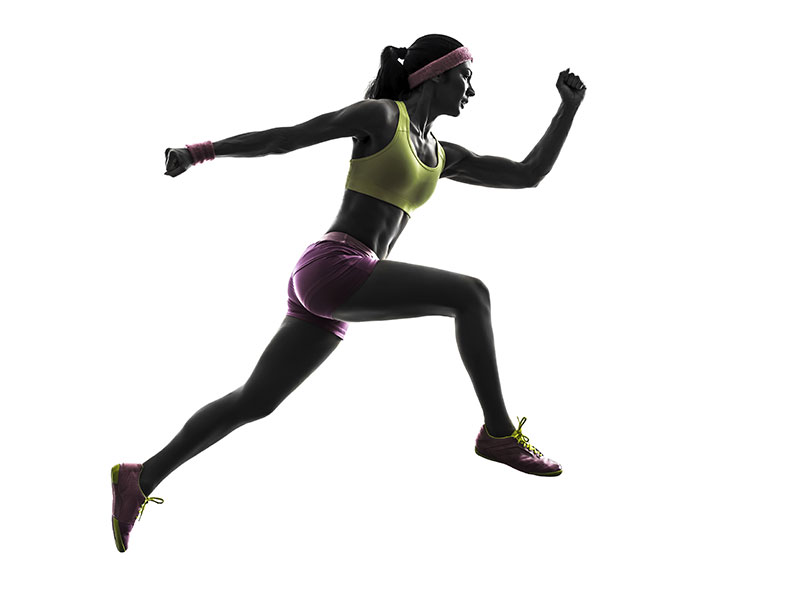If you want faster race times, decreased injuries and more enjoyment in your running, you’ll want to check your running form. Do you know what errors you make when you run and how to correct them? Let’s take a look at you from the ground up.
Ground’s Eye View
If your feet are rigid or built asymmetrically, the result can be fractures, shin splints, and strains or even back pain. Feet should be more like flexible adaptive springs than rigid stilts. If you have rigid feet that slap or attack the earth rather than tread gently and efficiently, specialty-trained doctors and therapists can evaluate them and literally manipulate (chiropractors typically call it “adjusting”) the joints for optimum function.
Knees
Knees are often a reflection of what’s above or below. If one knee rotates or collapses inward too far, the culprit may be over-pronation in the foot. Control this by strengthening your quads, hamstrings and the muscles surrounding the ankles, wearing custom-fitted orthotic supports, taping or choosing proper shoes. This causes many knee problems to vanish. Strengthening your glutes and core can also help. Collapsing knees suggest muscles that aren’t up to demands.
Hips
Asymmetrical runners get hurt more frequently than “tight” ones. Here’s how you can tell if you’re asymmetrical: while lying on your back or sitting, can you comfortably place your foot on the opposite knee (hip external rotation)? How about rotating your hip the other way (hip internal rotation)—can you do that symmetrically and pain-free? If you discover excessive tightness or asymmetry, work to correct that.
Spine
Successful runners have the spinal posture, flexibility and power to spring into action. If your low back dips in excessively when you run or stand (picture the depression in the small of the back of a very pregnant woman), simple pelvic tilt exercises can gently work to limber up this area and decrease low back stress—though ladies, my tip for you is to throw away your heels. If you round your shoulders, you’re cutting down your lung capacity. Run tall, strengthen your hips, core and spinal muscles and consider a trainer or chiropractor if you need more help.
Arms & Shoulder
The path of the elbows when you run determines the path of your arms. Arms should move front-to-back, driving forward rather than twisting. If one or both of your arms cross over the body, work to straighten your motion. Energy that does not drive you forward is wasted.
Hands
Running with your hands balled into fists tightens your arms and shoulders and inhibits smooth breathing. Relax your hands; imagine holding a potato chip between the thumb and index finger. Run, relax and save that chip!
Head
Don’t let your head roll from side-to-side. It wastes energy. I recently saw a talented runner leading in an NCAA D-III regional cross-country meet whose head was rolling. The runner behind him was controlled, relaxed and his head was still. He looked like he was stalking prey and, sure enough, his form won out. After the race, I advised the runner-up to work on his head rolling. Did he listen? I can’t say, but I do know that at the national championship meet the reformed head-rolling athlete finished ahead of the other one. Decrease wasted energy to improve your results.
I’ll see you on the roads and trails, my friends.


